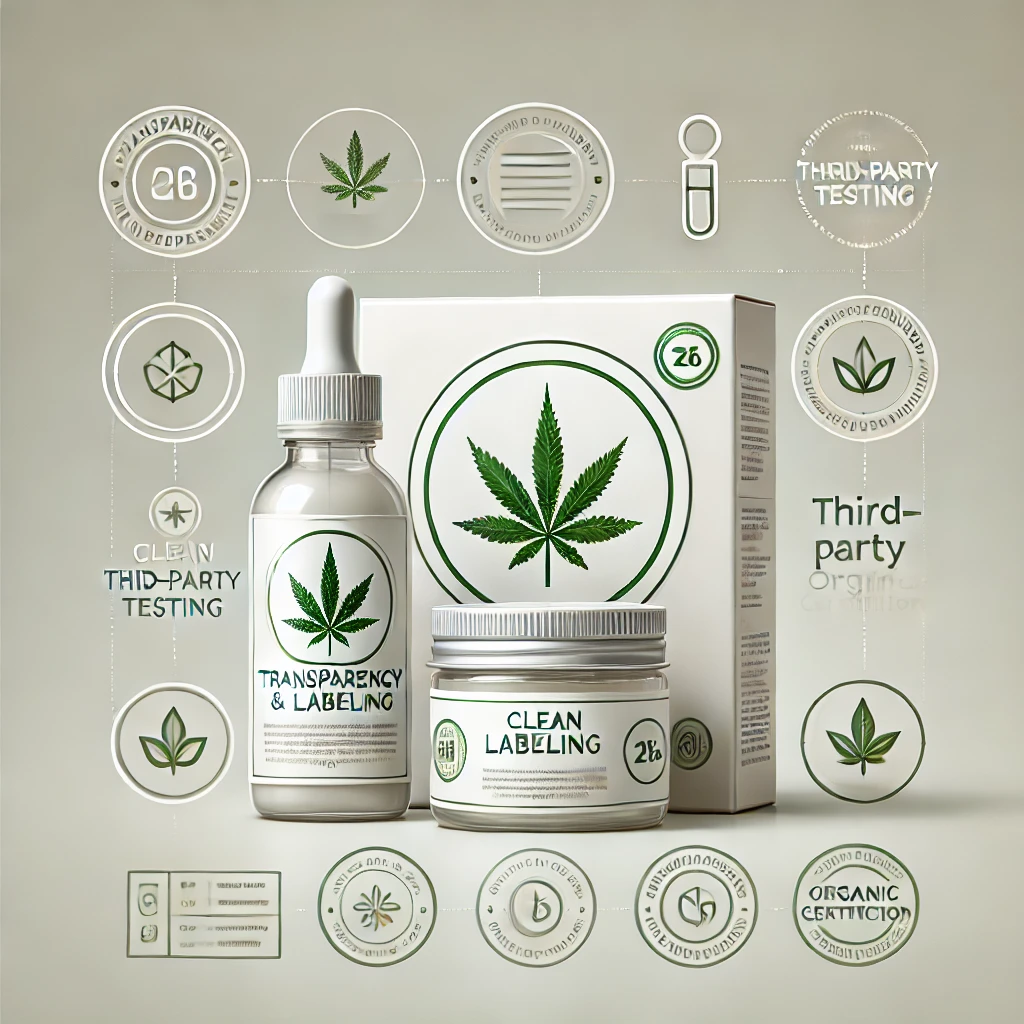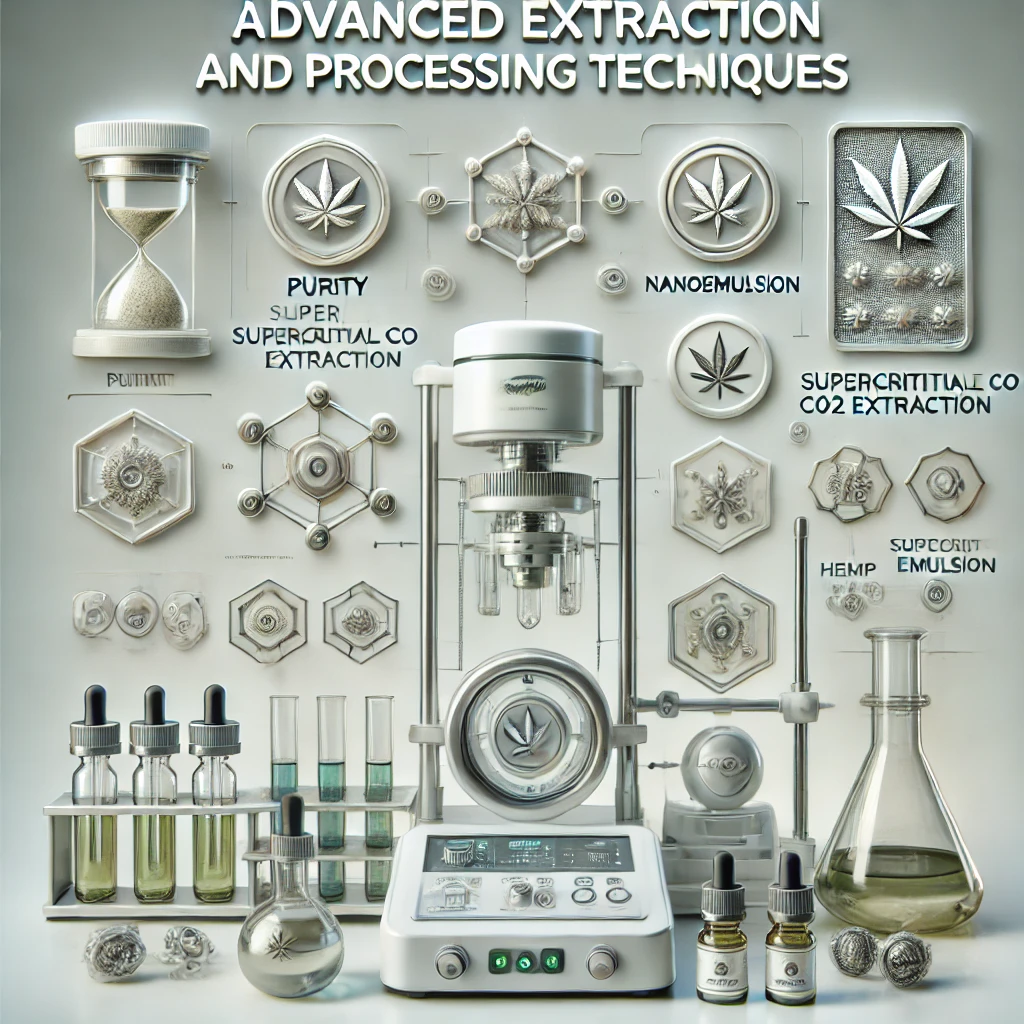Emerging Trends in Hemp Product Development
As the hemp industry grows at an unprecedented rate, brands must strategically navigate complex regulatory landscapes, shifting consumer demands, and emerging product trends. This white paper provides an in-depth look at key trends—clean labeling, product diversification, functional wellness, advanced processing techniques, and regulatory shifts—and offers actionable strategies for dispensaries looking to excel in this dynamic market.
Transparency and Clean Labeling
 Transparency has become a top priority for consumers in wellness-focused industries, including hemp. According to a 2023 Journal of Consumer Research study, 78% of consumers prioritize clean, minimal ingredient labels (Source 1). This trend is particularly significant in hemp, where clean labeling, third-party testing, and certifications such as USDA Organic and Non-GMO are viewed as signs of quality and reliability.
Transparency has become a top priority for consumers in wellness-focused industries, including hemp. According to a 2023 Journal of Consumer Research study, 78% of consumers prioritize clean, minimal ingredient labels (Source 1). This trend is particularly significant in hemp, where clean labeling, third-party testing, and certifications such as USDA Organic and Non-GMO are viewed as signs of quality and reliability.
Case Example: Green Earth Naturals adopted clean labeling, listing organic sourcing and lab certifications on each product. This initiative led to a 30% boost in customer retention within two years, underscoring the power of transparency.
Actionable Insight: Implement third-party testing and secure recognizable certifications to highlight transparency and quality. Display these on packaging and websites to align with consumer expectations for clarity and trustworthiness.
Product Diversification in the Hemp Market
Product diversification is reshaping the hemp industry. Today, hemp-based offerings span from oils and tinctures to edibles, beverages, topicals, and pet products. In 2022, the Hemp Industry Report revealed that topicals alone grew by 45%, driven by consumers seeking easily applicable, daily-use products (Source 2). This diversification allows dispensaries to meet unique consumer preferences, such as skincare enthusiasts or pet owners looking for natural health solutions.
Case Example: Vital Leaf launched a multi-category line that includes teas, skincare, and wellness supplements. This diverse product mix attracted a wider customer base, strengthening brand loyalty and engagement.
Actionable Insight: Introduce a range of product types to meet varied consumer needs. Focus on topicals, edibles, and pet products to tap into growing segments, and consider small-batch releases to test market interest.
Focus on Functional Wellness Benefits
Consumers are increasingly seeking wellness products with specific benefits, such as stress relief, sleep support, or enhanced focus. Functional products that blend hemp with adaptogens, nootropics, and other complementary ingredients are now highly desirable. According to Wellness Insights research, 65% of hemp consumers prefer products marketed with targeted health benefits (Source 3).
Case Example: CalmCo successfully combines hemp with adaptogenic herbs like ashwagandha, providing products specifically tailored for stress relief. This strategic focus has allowed CalmCo to attract a dedicated consumer base that prioritizes mental wellness.
Actionable Insight: Develop product lines with targeted wellness benefits by combining hemp with functional ingredients like adaptogens for stress relief or melatonin for sleep support. Educate consumers about these benefits to enhance engagement and loyalty.
Advanced Extraction and Processing Techniques
 Technological advancements in extraction are transforming hemp product development. Supercritical CO₂ extraction and nanoemulsion technology are two primary methods that increase purity and bioavailability. Grandview Research highlights the importance of these methods, noting that nanoemulsion can boost absorption by up to 200% (Source 4).
Technological advancements in extraction are transforming hemp product development. Supercritical CO₂ extraction and nanoemulsion technology are two primary methods that increase purity and bioavailability. Grandview Research highlights the importance of these methods, noting that nanoemulsion can boost absorption by up to 200% (Source 4).
Case Example: NanoHemp Solutions implemented nanoemulsion technology to offer smaller, more effective doses, resulting in increased customer satisfaction and repeat purchases. This method has proven to be a significant differentiator for the brand, appealing to consumers seeking premium-quality products.
Actionable Insight: Invest in advanced extraction techniques like nanoemulsion and CO₂ extraction to enhance product quality and effectiveness. Emphasize sustainability in extraction, as environmentally-friendly methods resonate with eco-conscious consumers.
Regulatory Developments and Market Expansion
The regulatory landscape remains complex and inconsistent across regions. The 2018 Farm Bill in the U.S. created momentum for the industry, but state-specific regulations present ongoing compliance challenges. Meanwhile, in Europe, regulations vary widely, though recent legal rulings are creating a more favorable outlook for hemp (Source 5).
Case Example: Global Hemp Corp leveraged Europe’s regulatory shifts to expand into markets like Germany and France, increasing its international revenue by 25% within a year by aligning with local compliance standards.
Actionable Insight: Develop a proactive regulatory strategy that includes consultation with legal experts and compliance monitoring. For international expansion, understand regional requirements and adjust formulations as needed to meet each market’s standards.
Challenges and Opportunities for Hemp Brands
While the hemp industry presents significant opportunities, brands must navigate challenges such as regulatory complexity, supply chain instability, and increasing competition. Strategic investments in compliance, operational efficiency, and consumer education can mitigate these risks and strengthen market positioning.
Case Example: Spectracom Labs helped a U.S.-based dispensary enhance compliance measures and streamline its supply chain, resulting in a 20% reduction in operational costs and improved consumer trust.
Actionable Insight: Build a robust compliance framework, diversify suppliers for supply chain stability, and invest in consumer education initiatives to enhance trust and loyalty. Optimizing operations reduces costs and improves profit margins.
Conclusion
The hemp industry is advancing rapidly, offering brands opportunities to differentiate through transparency, product variety, functional benefits, and sustainable practices. By staying informed on regulatory shifts and investing in innovation, brands can build stronger connections with consumers and thrive in an increasingly competitive market.
References
- Consumer Preferences for Clean Label Products in Hemp Industry
Journal of Consumer Research, 2023 - Product Diversification in the Hemp Market
Markets and Markets, Industrial Hemp Market Report, 2022 - Functional Ingredients and Their Role in Hemp Products
Wellness Insights, 2023 - Advancements in Extraction Technology for Hemp Products
Grandview Research, Industrial Hemp Market Analysis - Regulatory Trends and Their Impact on the Hemp Industry
USDA National Hemp Report, 2022

